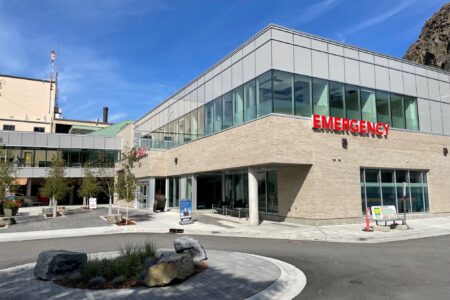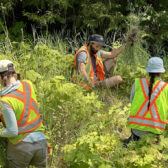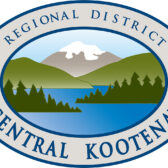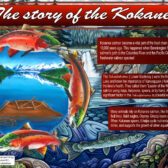Work crews making progress at former HB Mine site
Work crews continue to make progress Thursday, stabilizing the dam at the old former HB Mine tailings pond said Bill Macpherson of the Regional District of Central Kootenay (RDCK) Emergency Operations Centre.
“An improvement in weather conditions and the installation of additional high capacity pumps to draw down the pond has reduced the pressure and lowered the water level considerably in the past 24 hours,” Macpherson said in a press release.
“Siphoning hoses and other equipment is also being sent from the East Kootenay and Alberta to assist with reducing the pressure on the dam.”
During routine checks at the former HB Mine property, crews noticed the heavy rains earlier this week combined with creek and river inflows had put pressure on the earth dam, allowing seepage at some sections.
The HB Mine property, purchase by the RDCK in 1998, is located east of Highway 3 and 6, and south of Emerald Road, south of Salmo towards the Kootenay Pass summit.
“The surface water being pumped and flowing down the spillway and a natural drainage area on the other side of the dam is relatively clean,” Macpherson explained.
“There is some cloudiness from sediment and turbidity caused by erosion and sloughing from the dam itself.”
Macpherson said the tailings are particulate and ordinarily do not dissolve, although minute amounts could be suspended particulate as a result of lowering the water levels.
Pumps have been strategically placed to ensure there is no disturbance of tailings.
“All water being pumped is flowing downstream in the channels as intended,” he said. “The two flow streams join and enter a culvert at the highway and then into a drainage ditch before entering the Salmo River.”
“There have been no impacts on the few residents in the immediate area,” he adds.
RDCK engineers and assisting agencies hope to develop a long-term remediation plan once the pond has been lowered to a more manageable level.
This will involve examining piping and other refinements made to the tailings pond and dam over the years.
“Once the exact sources of seepages are identified and the structure is determined safe for heavy equipment and operators, in-filling, shoring and rock replacement will begin,” Macpherson said.

























